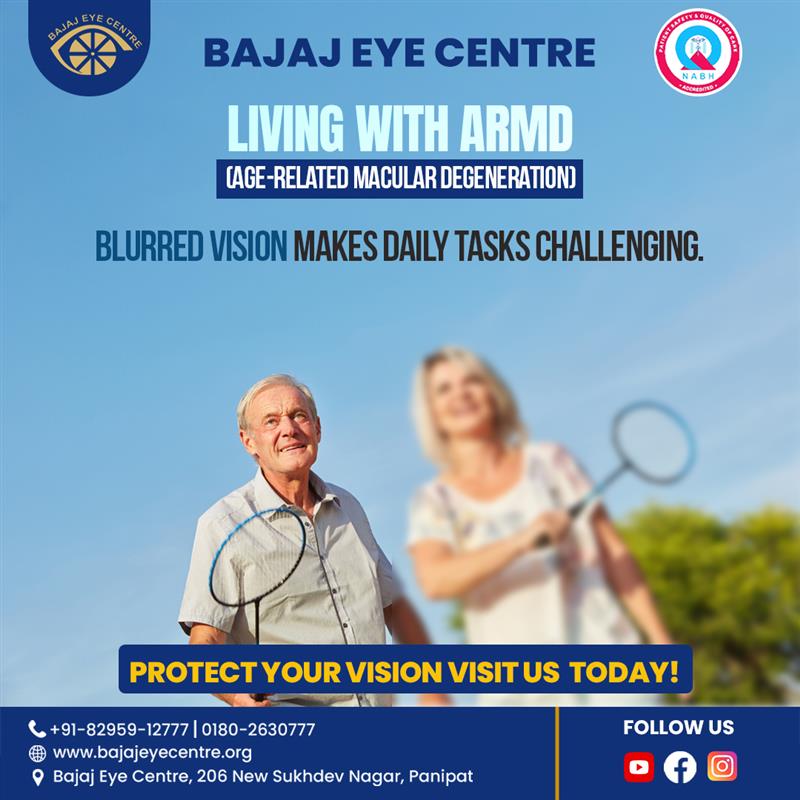Age-Related Macular Degeneration (AMD) is a prevalent eye condition that primarily affects older adults. If you’re feeling overwhelmed by the complexity of AMD or are just looking to understand it better, you’ve come to the right place. In this comprehensive guide, we’ll delve into what AMD is, its symptoms, causes, and the best ways to manage and prevent it. So, let’s explore this eye condition together and arm ourselves with knowledge!
What is Age-Related Macular Degeneration?
The Basics of AMD
Age-Related Macular Degeneration, often referred to as AMD, is a serious condition that impacts the macula of the retina. The macula is the central part of the retina responsible for sharp, straight-ahead vision. When it deteriorates, it leads to blurred or distorted vision, making daily activities challenging.
How AMD Affects Vision
The macula is crucial for tasks that require detailed vision, like reading or recognizing faces. Damage to this part of the retina can cause central vision loss, though peripheral vision often remains intact. This can significantly affect one’s quality of life, making routine tasks more difficult.
Types of Age-Related Macular Degeneration
Dry AMD: The Most Common Type
Dry AMD is the most prevalent form, accounting for about 90% of cases. It involves the gradual breakdown of the macula’s cells. This type progresses slowly, leading to a gradual loss of vision.
Key Characteristics of Dry AMD
- Slow Progression: Symptoms develop gradually over years.
- Macular Drusen: Yellowish deposits that form under the retina.
- Blurry Vision: Central vision becomes less sharp.
Wet AMD: The Less Common but More Severe Type
Wet AMD is less common but tends to progress rapidly. It involves the growth of abnormal blood vessels under the retina, which can leak fluid and blood, leading to severe damage to the macula.
Symptoms of Wet AMD
- Rapid Vision Loss: Sudden decrease in central vision.
- Distorted Vision: Straight lines may appear wavy.
- Blind Spots: Dark or blank spots in the central vision.
Symptoms of Age-Related Macular Degeneration
Recognizing the symptoms of AMD early on can make a significant difference in treatment outcomes. Here are some common signs to watch for:
- Redness and Pain: Eyes may appear red and feel painful.
- Shadow or Dark Curtain: A shadow or dark curtain in your vision.
- Distorted Lines: Straight lines may look wavy or bent.
- Blurred Vision: Vision might become hazy or unclear.
- Objects Appear Smaller: Objects may seem smaller than they are.
- Fluctuating Vision: Changes in vision clarity, from clear to blurry.
- Hallucinations: Seeing things that aren’t present.
- Difficulty Seeing Objects: Challenges in seeing things directly in front of you.
Causes and Risk Factors of Age-Related Macular Degeneration
Understanding what leads to AMD can help in its prevention and management. The primary causes and risk factors include:
Genetic Factors
Genetics play a significant role in AMD. If your family has a history of AMD, you might be at a higher risk of developing it.
Environmental Factors
- Smoking: Tobacco use significantly increases the risk of AMD.
- Obesity: Excess weight can contribute to the development of AMD.
- High Blood Pressure: Hypertension is a known risk factor.
- Poor Diet: Diets high in saturated fats may raise your risk.
Diagnosis of Age-Related Macular Degeneration
Eye Exams
Regular eye exams are crucial for early detection of AMD. During an eye exam, your eye doctor will perform various tests to check the health of your retina and macula.
Imaging Tests
- OCT (Optical Coherence Tomography): Provides detailed images of the retina.
- Fluorescein Angiography: Uses dye to visualize blood vessels in the retina.
Treatment Options for Age-Related Macular Degeneration
While there is no cure for AMD, several treatments can help manage the condition and slow its progression.
For Dry AMD
- Dietary Supplements: Vitamins and minerals can slow the progression of dry AMD.
- Lifestyle Changes: Quitting smoking and maintaining a healthy weight.
For Wet AMD
- Anti-VEGF Injections: Medications injected into the eye to reduce abnormal blood vessel growth.
- Photodynamic Therapy: A laser treatment to destroy abnormal blood vessels.
Preventing Age-Related Macular Degeneration
Maintain a Healthy Lifestyle
- Balanced Diet: Eat foods rich in antioxidants and omega-3 fatty acids.
- Regular Exercise: Stay active to help reduce your risk.
- Avoid Smoking: Smoking cessation is crucial.
Regular Eye Check-Ups
Regular eye check-ups can help detect AMD early, allowing for prompt treatment and better management of the condition.
Living with Age-Related Macular Degeneration
Adapting to Vision Changes
Adapting to vision changes can be challenging but manageable with the right strategies. Tools like magnifiers, large-print books, and specialized lighting can help.
Support and Resources
Many organizations and support groups are available for people with AMD. They offer resources, advice, and community support to help manage the condition.
Conclusion
Age-Related Macular Degeneration can be a daunting condition, but understanding it better equips us to manage and prevent it. Regular eye exams, a healthy lifestyle, and timely treatment can significantly improve quality of life. If you suspect you have AMD or are at risk, don’t hesitate to consult with an eye specialist.


